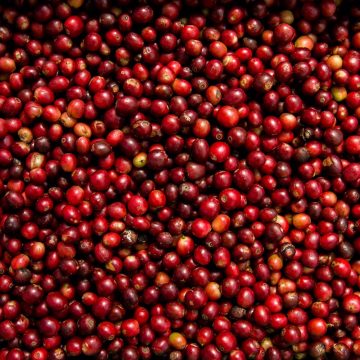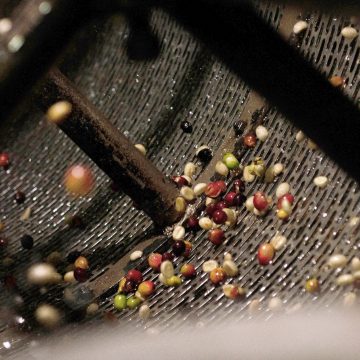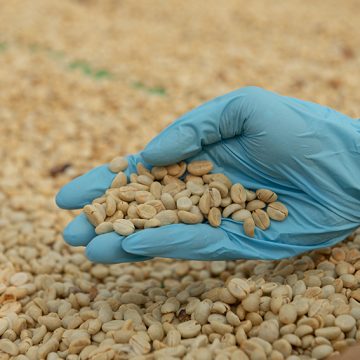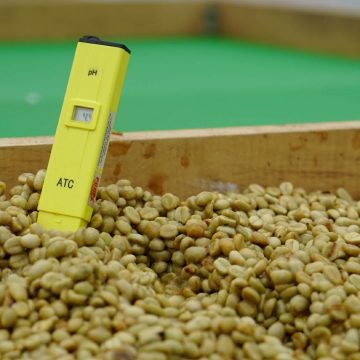
Processing
We invested in state of the art processing equipment so that we could turn our best coffee cherries into the highest quality green coffee possible. We chose to use Pinhalense’s Wet Mill and Dry Mill lines to ensure only the best output, both in yield and quality.
Organic & Food Safety
Our entire process follows the standards and protocols of USDA Organic and ISO 22000 Food Safety.
Coffee Processing and Drying

After fresh coffee cherries are harvested in the mountainous regions they are carefully delivered to PANA Coffee’s Wet Mill in Doi Saket where they are inspected, washed, separated and processed before being carefully dried.
When our coffee cherries arrive, they are inspected for quality. We check for the following measures:
- Cleanliness
- Pesticide Residue
- Ripeness Uniformity
- Brix (Sugar Content)

Washer and Separator
An important part of coffee processing is to wash and separate the coffee cherries before any next stages. Here we remove lower grade cherries through flotation using our Pinhalense Mechanical Syphonic System. This stage also helps to reduce foreign matter and the microbial load before any fermentation or drying by cleaning the quality coffee cherries.

Eco Super Pulper
After fresh coffee cherries are washed and sorted a number of different processes can be selected. In the case of processing that requires pulping of the coffee cherry, we utilize our Pinhalense Eco-Super Pulper. A screen pre-pulper in combination with vertical pulper allows us gently pulp the coffee with minimal water usage. This helps to reduce damaged coffee, and also avoid dilution of sugars in the coffee mucilage. The ending result increases both yeild and quality of the cup.

Fermentation Tanks
Upon removing the outer skin-layer of the coffee we can transport our freshly pulped coffee into stainless steel tanks where fermentation both dry and wet-submerged can take place. This requires careful monitoring to ensure fermentation is completed, yet not overdone. We monitor water TDS, pH amongst many other parameters throughout the fermentation process.

Demucilager
(Mechanical Mucilage-Remover)
In the event further fermentation is no longer necessary but there is still mucilage to remove, we use our mechanical mucilage remover. This machine meticulously cleans and removes the mucilage layer while gently keeping the parchment layer of the coffee pefectly intact.

Controlled Drying Environment
Perhaps the most crucial part of the process is the last step, which is to dry the coffee. Every coffee regardless of process must be carefully dried to 11% ±1% moisture content wet basis. We created drying houses with adequate airflow 24-hours a day. We monitor and manipulate both humidity and temperature levels in order to preserve the quality of our coffees.

Washed Process (Parchment-Dried)
Washed processing is when we pulp to remove the skin-layer of the coffee fruit and then either ferment the coffee or mechanically remove the mucilage-layer before drying the coffee. Typically, resulting in a cleaner, lighter and acidic taste.

Honey Process (Mucilage-Dried)
Honey processing is when we pulp to remove the skin layer of the coffee fruit and dry the coffee with the mucilage still on the parchment-layer. Typically, this creates a superb balance between sweetness, body and acidity.

Natural Process
(Skin-Dried)
Natural processing is when we wash the whole fruit but do not pulp the coffee. We then dry the coffee cherry whole. The slowest drying method, however typically this can increase body, sweetness and fruity flavors in the coffee.
Wet Mill Gallery
Through controlled and technical coffee processing we can achieve a higher quality cup and elevate Thai coffee to an international level.

USDA & EU Organic

Food Safety Standard Certification

International Standard Organization





